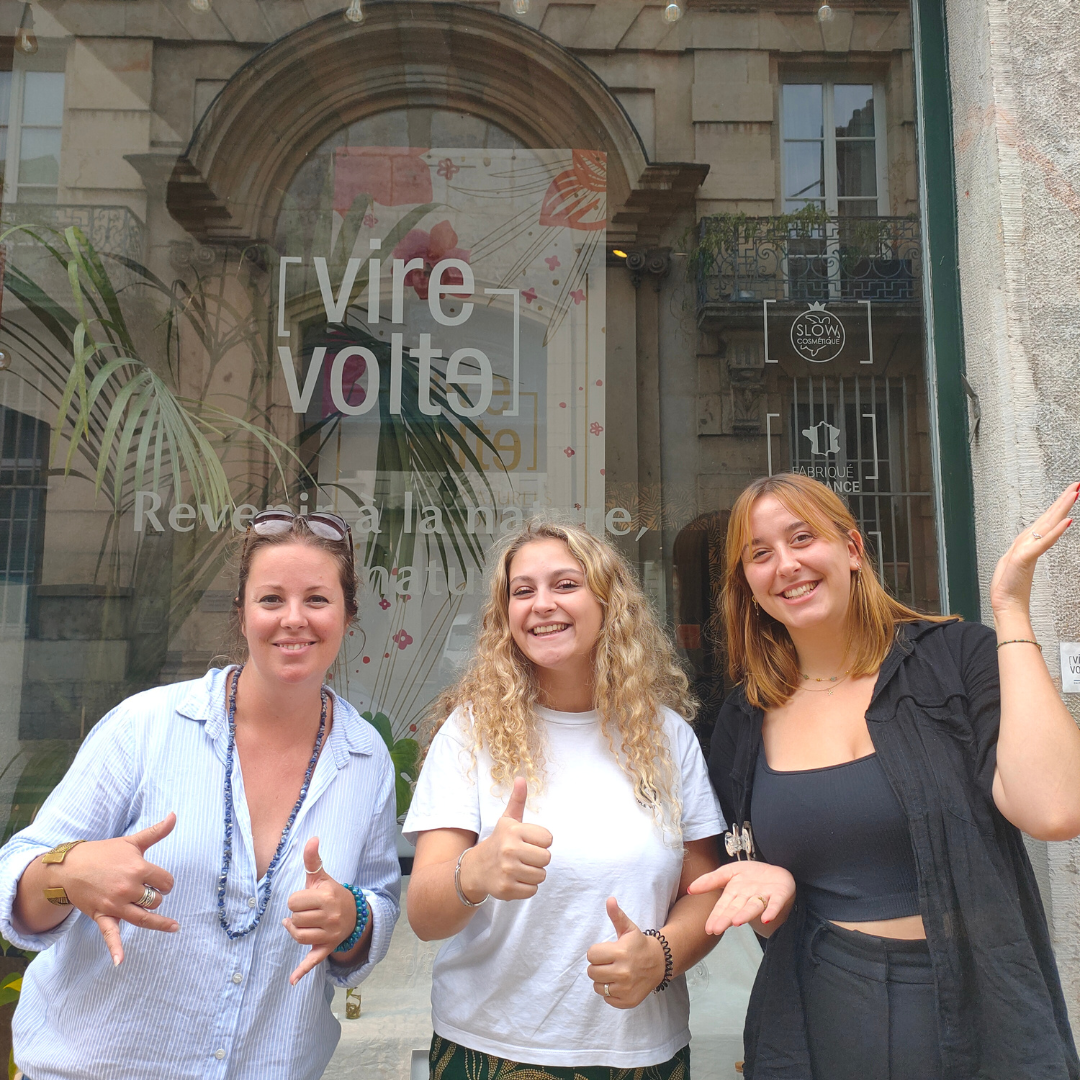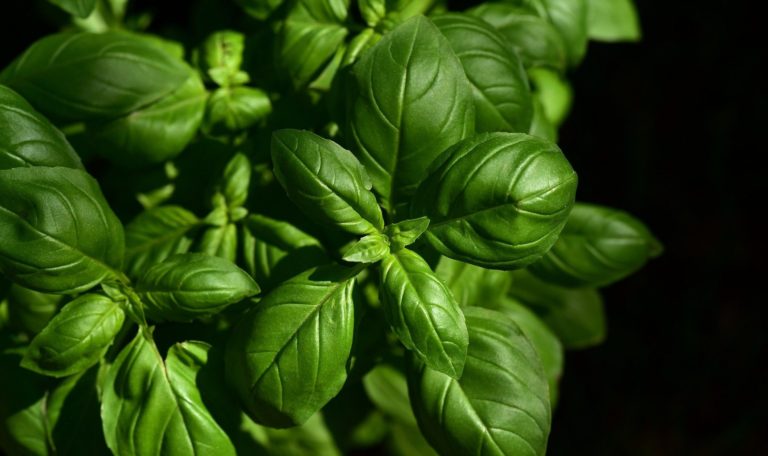
Originally
3000 years ago, the Egyptians during religious ceremonies, in the temples, used aromatic plants in fumigation in order to establish a link between man and the world of the gods. They had a great knowledge of them and used them in many ways, medicinal, in the manufacture of cosmetics, perfumes, oils, ointments. The aromatic plant differs from other plants by its odoriferous and fragrant principles. These scents can come in base, aniseed, burnt, camphor, minty, ethereal, floral, pungent, musky and even putrid aromas.
Fresh, the plant contains about 80% water, it can be used medicinally, in cooking or in cosmetics, beneficial even in the garden. Dried, it loses part of its essence. The conservation of the aromatics is done away from humidity, heat and light. Some aromatics contain essential oils used in perfumery: basil, lavender, marjoram, mint, lemon balm, rosemary, sage, verbena. They often enter into herbaceous, fern or spicy compositions. They can provide tonic, fruitiness depending on the odorous molecules they contain. The Middle Ages was the reign of the herb. All the gardens of convents and castles had their aromatic plots. The beginning of the XNUMXth century marked a decline in the use of aromatic and medicinal plants.
Our world is becoming a crossroads of smells that infiltrate our daily lives unwittingly so that our olfactory memory brings them back to us at the first emotion.
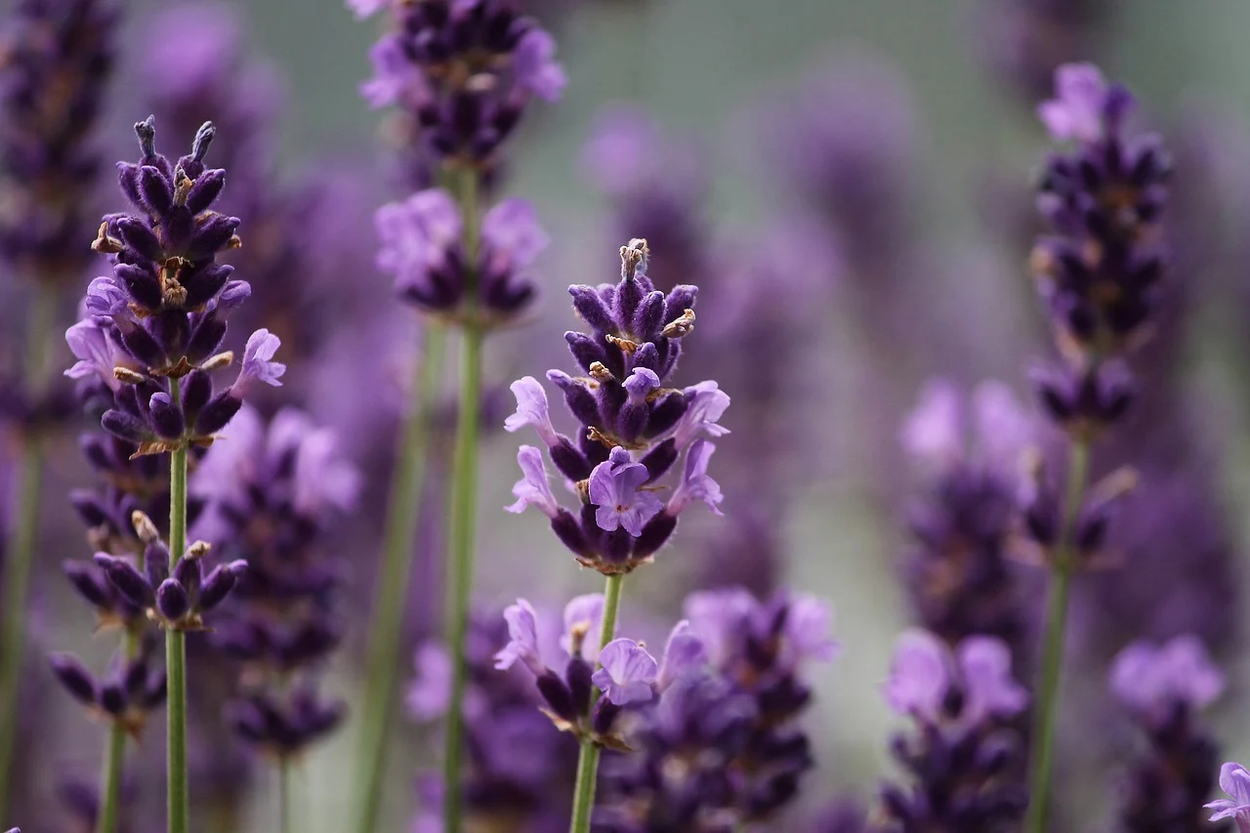
Lavender, Lavandula augustifolia Miller Lamceae
Its different blues, its scents, are intimately linked to Provence. This aromatic is nowadays inseparable from a smell of freshness, its fragrance is both fine and powerful, invigorating and soothing.
Originally
The word lavender comes from the Latin lavare, which means to wash, which will also give lavender. Its smell represents a floral note, of cleanliness.
Of the history
The Romans already washed with sprigs of lavender, it perfumed their baths, their linens. In the Middle Ages, it is found in all monastery gardens as a medicine and for cosmetic preparations, toilet waters, ointments, skin care.
In the XNUMXth century, aromatic waters were very fashionable. All royal gardens have a few squares of Lavender. Marguerite de Flandres, Duchess of Burgundy in her residences in Rouvres, near Dijon and Germolles, near Chalon sur Saône, had Lavender cultivated to obtain Lavender floral water. Lavender perfumes the vinegar used for the dry toilet, that is to say that the different parts of his body were rubbed with this perfumed vinegar in order to remove all traces of impurity. The border between medicinal and aromatic is thin.
At the end of the 1901th century and the beginning of the XNUMXth century, English Lavender prevailed over French. It was during the Universal Exhibition of XNUMX that Parisians began to reclaim French Lavender.
In the XNUMXth century, the first cultures of Lavender in Provence appeared. They will change the landscape of Provence. We had to wait for mechanization to be able to reach these hard-to-reach lavender fields.
In Provence, some fifty years ago, it was with the family that we picked Lavender, the men distilled on the spot with stills mounted on trailers, the women cut, the children tied the bouquets, the infants slept on small mattresses made of lavender flowers. Currently the culture of officinal lavender, the true, the fine, the Blue is supplanted by the culture of Lavandin. This one has a ratio twice as beneficial. But it does not enter into the composition of perfumery, it is only used for industrial uses such as soap making etc.
A bit of botany
Three species perfume the Mediterranean hills, the officinal better known as "the fine, the true", the aspic and the stoechas.
Officinal lavender: has a smaller flower, rectangular in shape, its stem is shorter, thinner. Its fragrance is delicate, flowery, it smells “clean”. It enters into cosmetic products, it is intended for perfumery.
The asp: prefers low-lying hills, is recognizable by its longer, more pointed flower. Its leaves are spatula-shaped, its smell is more camphoric.
The stoechas: has a square flower with butterfly wings. It grows in warmer and siliceous regions, bordering the Mediterranean. It has no cosmetic use and hardly any medicinal use lavandin: hybrid resulting from the crossing of the officinal and the aspic, created for the needs of the mechanization of its intensive cultivation. Its spike-shaped flower, its longer stem and its more camphorated fragrance.
Properties
True lavender, in infusion, is effective against migraines, those of digestive origin. It has stomachic and antispasmodic properties, it is also indicated in vertigo, cough, bronchial affections. It is one of the few essential oils that can be given to children. Lavender essence is used primarily for its disinfectant and healing effects. On the scalp a few drops are enough to keep lice away.
Diluted in a glass of hot water, two or three drops of essential oil are effective, when inhaled, against rhinitis, bronchitis. Lavender baths are indicated for children who have skin problems, dermatoses.
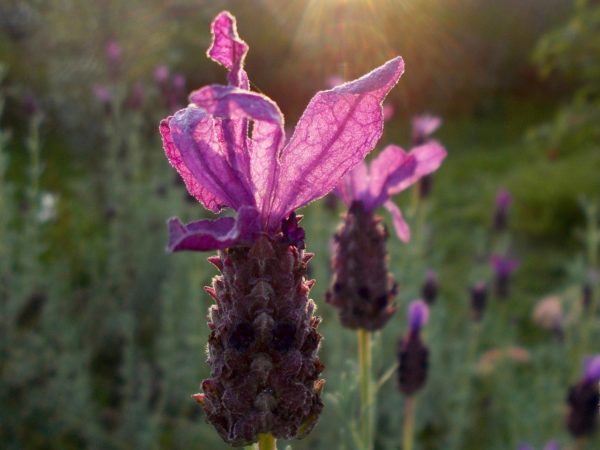
Its methods of extraction
Its harvest is done in July, at noon at the hottest time of the day. Lavender “boots” are cut and left on site for 48 hours to dry before processing. We then obtain a fresher essential oil without any hint of heating. For about twenty years, at the request of certain perfumers, experiments have been developed with so-called "crushed green" distillation, the chopped plant is treated without prior drying on the harvest site, in mobile vats then connected directly to a boiler. We get a very fresh, very green our. Lavandin and Lavender are the most produced perfume plants with essential oils in France.
In perfumery
It is part of the recipe for the famous "Aqua mirabilis" by Feminis in the XNUMXth century, which would later become eau de Cologne. Lavender is one of the main constituents of what is called the "fern accord", an olfactory family made up of lavender, coumarin, oak moss and wood. It is a heart note, but it can also be found as a top note in fresh compositions. It is a woody smell (by its stems) and very floral when it is picked at altitude. The smell of lavender is very attractive to men, it is present in most male colognes. Lavender honey is a very fragrant and renowned honey, melting in the mouth, you can taste all of Provence.
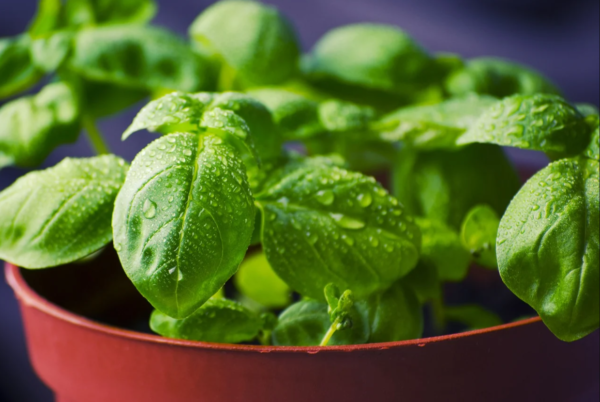
The Basilic, Ocimum sanctum, L. Ocimum basilicum, L. Lamiaceae
Its smell is most refreshing., basils are still appreciated and valued by Mediterranean culture. It's the smell of seduction, which whets the appetite...
Originally
The ocimum sanctum, the tulsi is the sacred nit for the Hindus, in all the courtyards of the houses an altar is dedicated to it. Its roots symbolize the pilgrims, its branch the divinity, its crown the Scriptures. Basil is a Greek word meaning "royal".
Myths and legends
A legend says: The conversion of the last Roman emperor, Constantine, led to the institution of Christianity as the state religion in the Roman Empire. The latter had a very religious mother, named Saint Helena. She looked in vain for the cross of Christ.
She left for Jerusalem, to search everywhere around Golgotha when she had a dream which advised her to return to the place of torture and to let herself be guided by a divine perfume. Back on the scene, the air smelled of a modest plant, basil. And it was under this plant that she discovered the cross. To attract their lovers, Roman courtesans cultivated it on the edge of their windows. It is said that the Greek emperors were baptized with floral water of basil.
A bit of botany
Originally from India, it will be brought back by the Arabs who make it undergo transformations. Currently, there are 150 species and even more varieties, horticulturists come up with varieties that smell like cinnamon, lemon, camphor, licorice.
Its mode of extraction
It is the aerial parts of the plant that are of interest to perfumery. Like most aromatics, basil is steam distilled. It is a clear, light yellow liquid characterized by a herbaceous, spicy and aniseed odor.
In perfumery
Two varieties are used in perfumery, the sweet basil with linalool grown in Yugoslavia, Morocco, Italy and Spain used in high-class perfumery and that rich in thymol produced mainly in Madagascar, Reunion, South Africa. It is used in inexpensive perfumery and soaps. Its smell is very difficult to reproduce synthetically. It is a green freshness. It enters into the composition of fresh waters, it reinforces the zesty side. It can also be used in a fruity chypre.
Marjoram : Oreganum vmarjorana, Lamiaceae L.
Originally
Very close to oregano in its composition, it is the cultivated version. While oregano can be found growing wild, marjoram is only found in cultivation here in Europe. It is the symbol of joy, its smell calms the spirits and heals the body.
Of the history
The Egyptians already knew its use, against headaches and nervous disorders. The Romans used it as an ointment for dental care. You can always find toothpaste with clay and marjoram. Marjoram baths are considered tonic, antispasmodic and beneficial for circulatory problems.
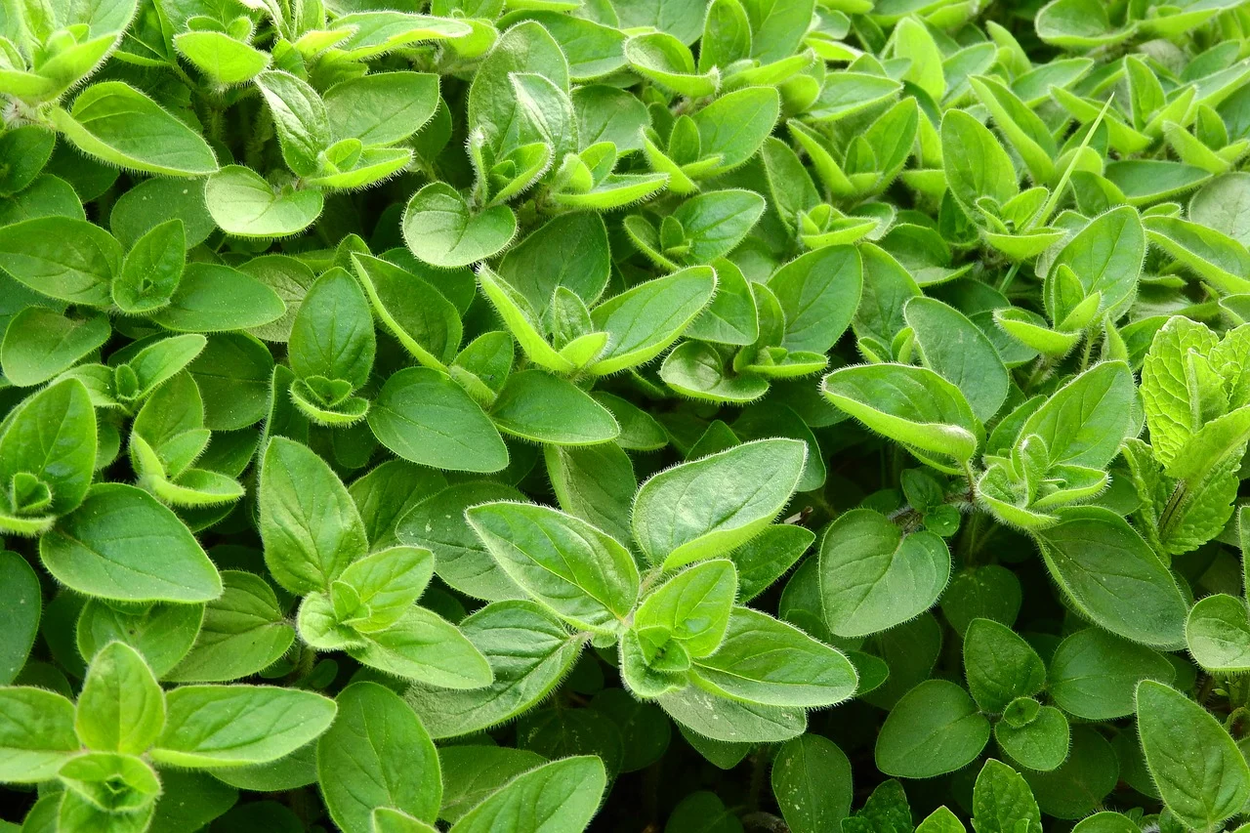
A bit of botany
Its stem is straight and frail, its leaves are opposite and alternate in the shape of shells, hence its popular name "marjoram with shells". From there leave its flowers in the form of lips of white color, grouped and small.
Its mode of extraction
It takes 750 kg of stems and flowering tops, fresh to obtain one kg. It is a pale to dark yellow liquid.
In perfumery
It has tonic, bitter, aromatic, hay and spicy notes. It enters as a moderator in herbaceous, fern, spicy compositions.
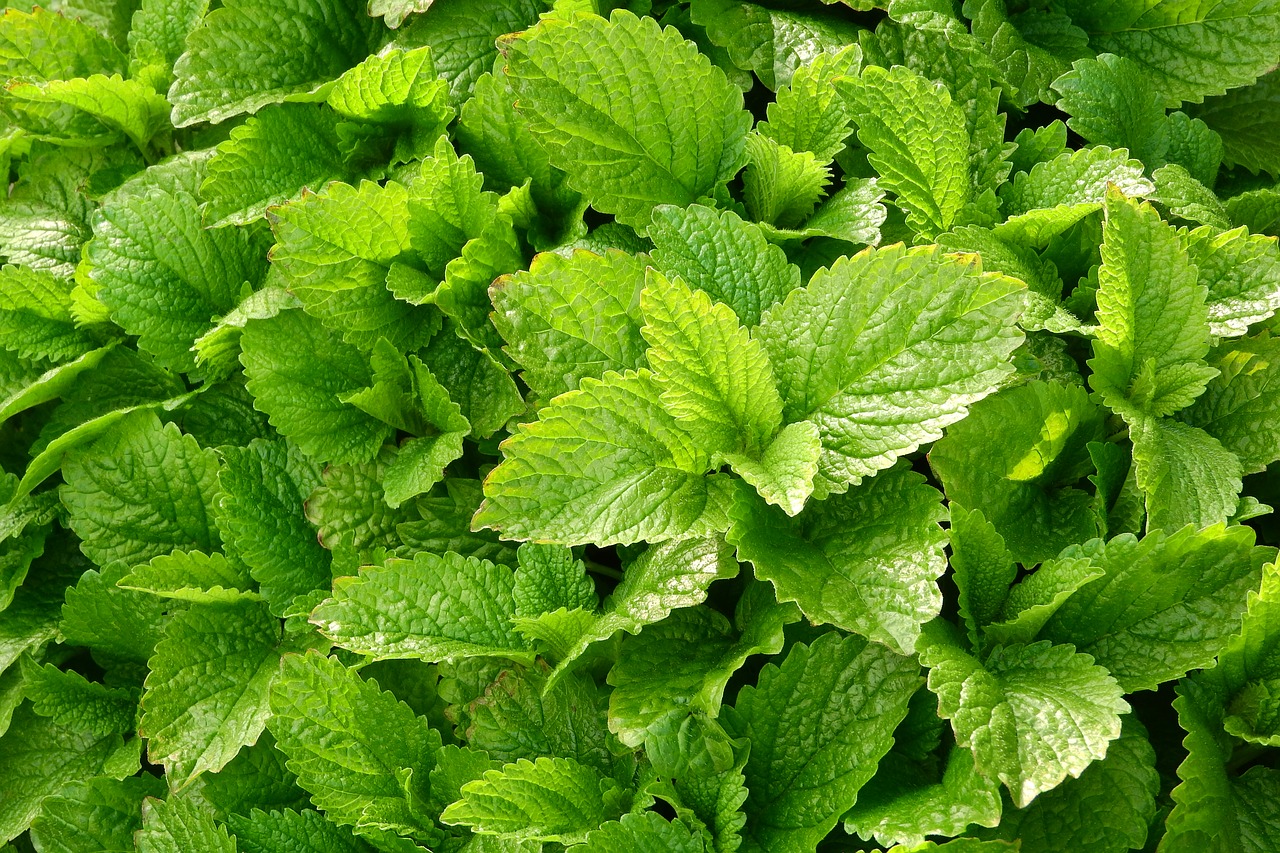
Lemon balm : Melissa officinalis L. Lamiaceae
Originally
Melissa is the Greek name of the nymph who found a way to collect honey. It has become by extension the name of the bee; she is the beloved of the bees. To increase their production and to attract new bees, beekeepers rub the hives with lemon balm flowers. It is native to the eastern Mediterranean basin. It is recognized by its lemony scent which often gives it its pseudonym of lemongrass.
Of the history
In 1379, a few years after the creation of the Elixir of the Queen of Hungary, the nuns of the Abbey of Saint Just, elaborated for King Charles V the famous Water of the Carmelites made by the Carmelites, composed mainly of Melissa. This water is still made today in the convents of the Carmelites as in that of Venice.
In the Middle Ages, it was cultivated not only in France, in northern Italy, but also in England, Germany and even in Scandinavia. Bath water was perfumed with it to strengthen the body. It is still cultivated in Switzerland, in the Doubs, in Haute-Saône to sweeten absinthe.
A bit of botany
It is a perennial plant, it grows in the shade, in cool places inhabited at the foot of walls, and sometimes in the vineyards. Its oval-shaped, embossed, widely serrated leaves are light green. When crumpled they give off a strong smell of lemon. Its flowers are small, white, sometimes pinkish, in the shape of lips. We harvest it from St. Jean in the middle of August in the morning, when the last drops of dew have evaporated. It is dried in bunches in the shade, its leaves should neither turn black nor yellow. It retains its good smell as soon as its leaves are crumpled.
Uses
It is a beneficial plant in states of nervous disorder. It is good for fighting against palpitations, dizziness, insomnia. It can also calm the nausea of pregnant women. It is used in infusion, never in decoction because it loses all its flavor. To be taken after the meal, it can be mixed with mint to facilitate digestion. Finely chopped fresh lemon balm leaves can flavor a salad. In maceration for 24 hours, 60 grams of leaves added to a liter of wine is a pick-me-up specially intended for tired men to be used as a medicine. This is a recipe taken up by Paracelsus (doctor and philosopher of the XNUMXth century).
Its mode of extraction
The leaves are steam distilled, fresh leaves are distilled. Lemon balm has a strong smell but is very volatile.
In perfumery
Given its performance, it is used by some so-called niche perfumers. Its fresh and lemony scent makes it a particular herbaceous, a smell of green, moist earth. It is given as an example because it is a popular plant by its uses and its smell but this one is totally volatile that it is elusive.
Peppermint, Mints: Mentha piperita Huds. Peppermint
Originally
Derived from the Latin mens-mentis meaning mind, its use in ancient times was to stimulate the mind.
Mythology
As for the spring, Hades king of the underworld married to Persephone, came out of the underworld, he put his foot on a tuft of mint represented by a Mintha nymph. He is immediately seduced by this smell and lies down on it. Demeter, goddess of knowledge, of agriculture, mother of Persephone, does not accept this attitude at all. Tramples the mint, makes it sterile, thus condemning it to reproduce by underground stolons...
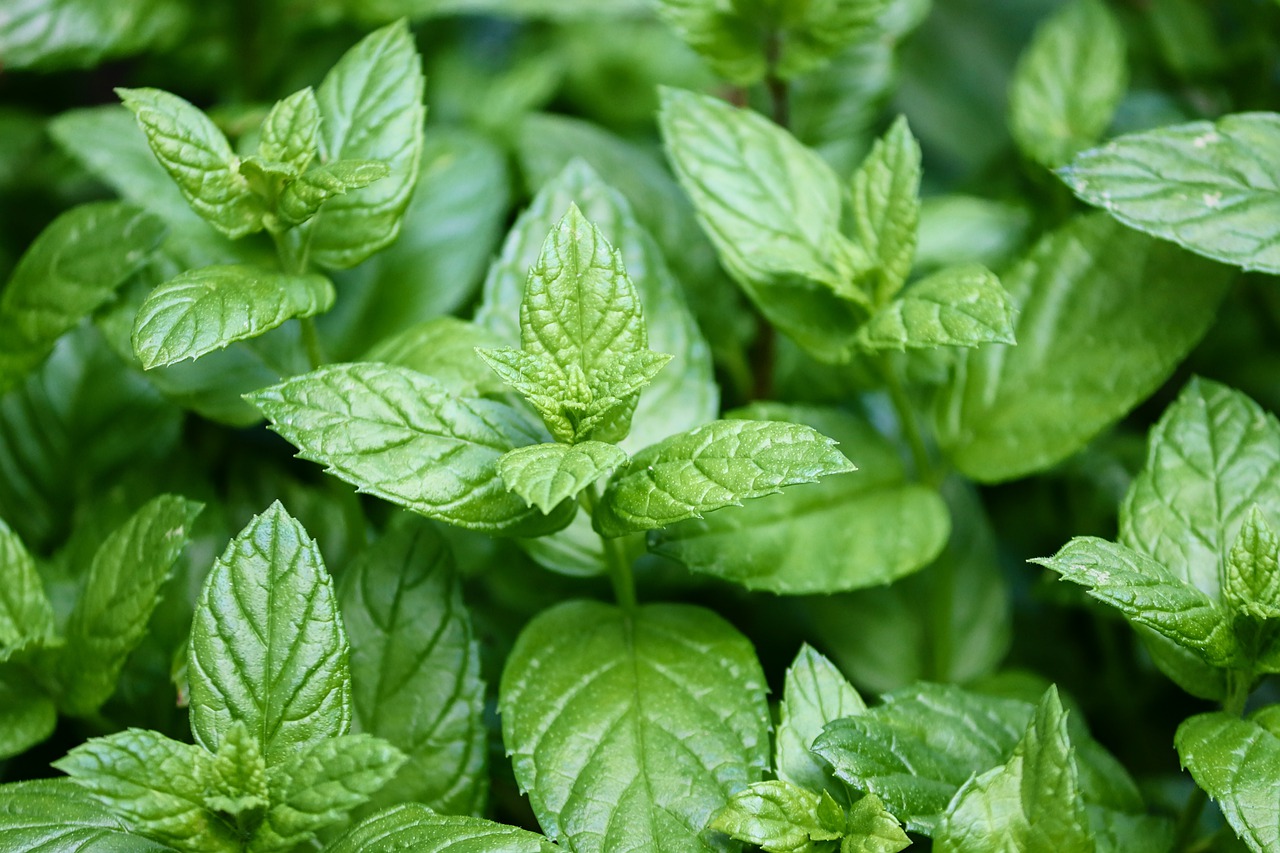
Of the history
Cultivated on a large scale, sold in all pharmacies, mint is one of the most recognized plants, it owes it to its perfume. The most popular are certainly peppermint and spearmint. They are still grown at the foot of the Lure mountain. In America at Yale University studies have been made on smells, Lavender wins the prize for the best smell while mint is considered the most dynamic of aromatics, thus making the minds of students more lively, more awake. Japan is the world's largest producer of peppermint. In the world of aromas, the scent of mint comes in third place. At the top we find vanilla, followed by citrus fruits.
Uses
Mints are digestive, tonic, stimulating and antispasmodic. In infusion, they have a power on the nervous system, they are therefore indicated in case of insomnia, palpitations, neuralgia, cramps, tremors. They fight bad breath, they are used in cases of digestive poisoning. At higher doses, they are indicated in case of general weakness. Its essential oil is best for treating indigestion, two drops on a teaspoon of honey. Its use is reserved for adults, it is too exciting and irritating for children, never make an infant smell mint essence, there is a risk of asphyxiation. In external use, in case of fainting rub the gums with 2-3 drops of mint essence. Remember the mint alcohol that our parents gave us after a festive meal. The handkerchief soaked in two drops of essential oil, which we breathe against car sickness.
A bit of botany
Only eight true species are known in Europe, 30 to 40 species in the world for 1200 hybrids. Being part of the Labiatae family, it has the same characteristics, square stem, opposite leaves, its flower in the shape of lips, composed of two very small, welded petals.
The best known are spearmint (mentha spicata), a hybrid of true mint (mentha suaveolens) and spearmint (mentha longifolia). It is also called nanah mint, originally from Lebanon, it came to us in the XNUMXth century by the Crusaders.
Peppermint (mentha piperata) is a cross between water mint (mentha aquatica) and spearmint.
Its mode of extraction
All mints provide an essential oil obtained by steam distillation of plants picked just before flowering. The facilities are sometimes rudimentary, copper stills, sometimes sophisticated, stainless steel tanks, depending on the place of production. It is in England at Mitcham that the finest peppermint is extracted. Today the United States is the largest producer of peppermint.
In perfumery
Field mint, pennyroyal, spearmint and peppermint are those used in perfumery. Perfumers have long favored peppermint for its balsamic freshness. She often features in male waters because she is fresh and vigorous. It can accompany spicy notes and become a fresh spicy kind. Nowadays a new variety arrives on the market, villosa mint, grown in southern Spain and Morocco. Its essential oil is reserved only for perfumery. It provides the pennyroyal oil of the English. Lemon mint can sometimes take the place of Bergamot, Lemon and Orange in certain toilet waters. All mints are considered top notes.
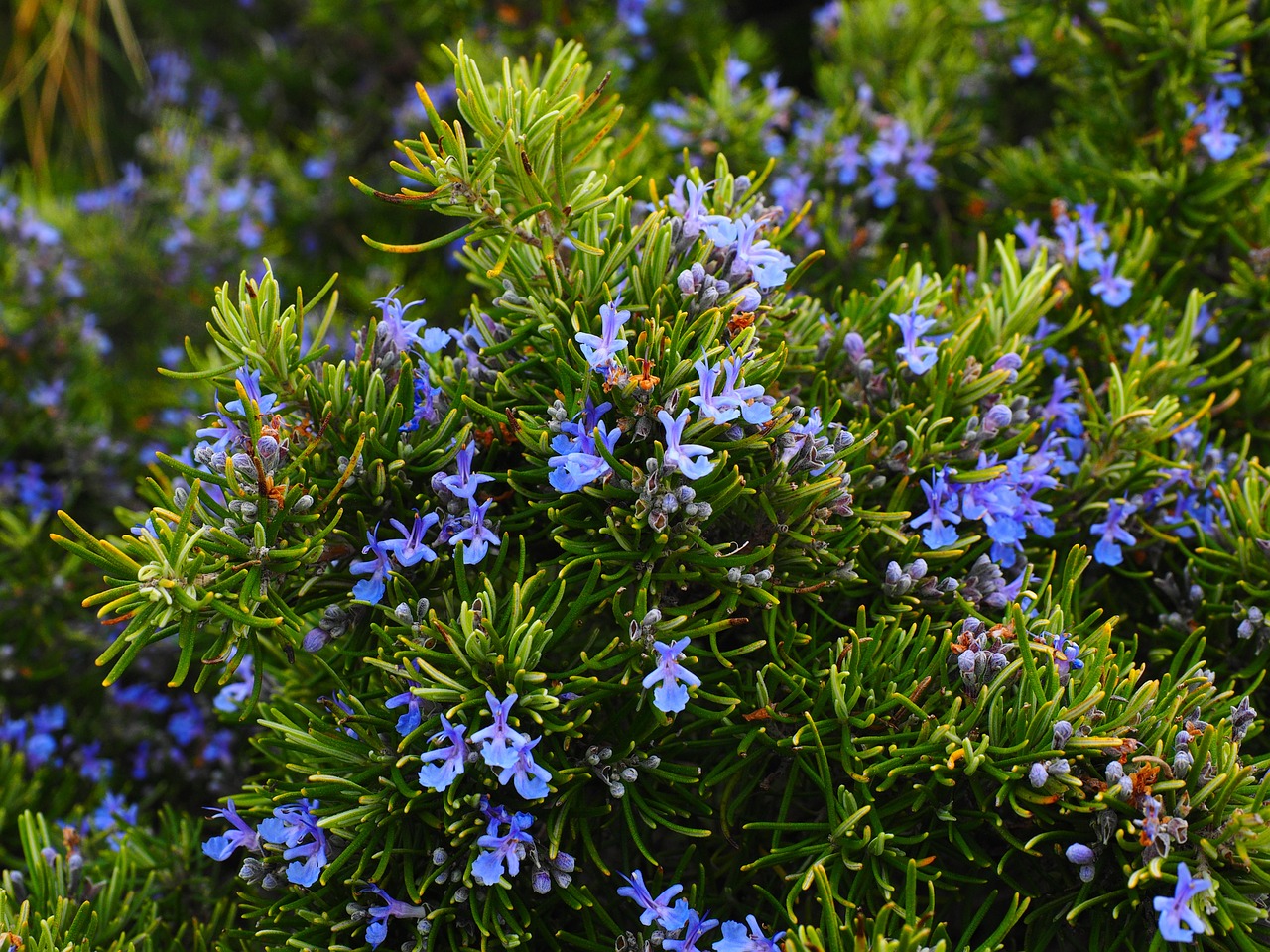
Rosemary, Rosmarinus officinalis L. Lamiaceae
This plant has a great wealth of uses due to its aromatic, medicinal and symbolic properties.
His origin
It grows spontaneously all around the Mediterranean, and as far as Central Europe. Its Latin name means “dew of the seas”. Its evergreen foliage guaranteed immortality. It is said that the Virgin Mary and her child, pursued by Roman soldiers, hid in a rosemary bush.
Of the history
Among the Romans it was used as a token of remembrance and later to mean "I'm thinking of you". The beauties of Antiquity and until late in the Middle Ages, perfumed themselves with oil in which rosemary flowers had macerated. In the XNUMXth century, Arnaud de Villeneuve, a doctor in Montpellier, knew how to distil the essence of pistachio terebinth and that of rosemary.
He was the first at the beginning of the 1370th century to isolate the essential oil that floats on the surface of distilled water. All these properties were attributed to the smell of the plant heated in the sun. It was the first plant to be distilled in the spirit of wine, in XNUMX for the manufacture of a treatment intended for Isabella of Hungary to give her a water of youth which allowed her to regain her youth and thus to marry the king of Poland. This elixir was called "water of the Queen of Hungary". It will keep its prestige for several centuries.
Uses
This water from the Queen of Hungary was used for a long time as an all-purpose remedy, applied to the neck and temples: it increases memory and calms the spirits. On the eyelids: it fortified the view, on the stomach relieved abdominal pain. To inhale clears the airways, calms bronchitis, sinusitis. It could also be drunk as an aperitif, which allowed an external and internal purification by the aromatic virtue. It is antiseptic, healing, parasiticidal. Powerful stimulant, it is best known for its hepatic action, it promotes bile secretion. It is one of the best antispasmodic and stimulating plants. Depurative, it can help purify the skin. Its essential oil mixed with a vegetable oil prevents cramps, relaxes, heals sprains. Rosemary flowers and leaves macerated overnight strengthen eyesight and memory. Rosemary oil should always be used internally, in moderation. The general fortifying rosemary baths are beneficial for liverworts and those suffering from visual impairment.
A bit of botany
A small evergreen shrub, it is one of the aromatic and medicinal plants of the Mediterranean scrub. Its leaves are very narrow, leathery, long and thin, green above and white below. Its flowering made of small blue flowers, spreads from February to November.
In perfumery
Distilled rosemary gives a fresh and pleasant fragrance with resinous notes. Rosemary is a bush that quickly makes wood. It is used to flavor cosmetic products such as deodorants and bath salts. The essence of the leaves is finer than that of the flowers. Its flowers give a much appreciated honey.
Clary sage, salvia sclarea, L. Lamiaceae
He who has sage in his garden does not need doctors.
That is to say how much this plant is charged with hope, it cures many ailments, sacred herb, offered to the gods, burned on the altars.
Originally
Sage, salvia in Latin, comes from salvare which means to save
Of the history
During Antiquity, the Egyptians used to drink it as an infusion to increase their fertility. The Greeks, Romans and Arabs used it as a tonic and as a compress against snakebites. Some Native American tribes mixed sage with animal fat to treat skin problems. In the Middle Ages, common sage and clary sage were found in all monasteries' gardens to treat various ailments. Hildegarde de Bingen calls clary the queen of aromatic plants, the very good one.
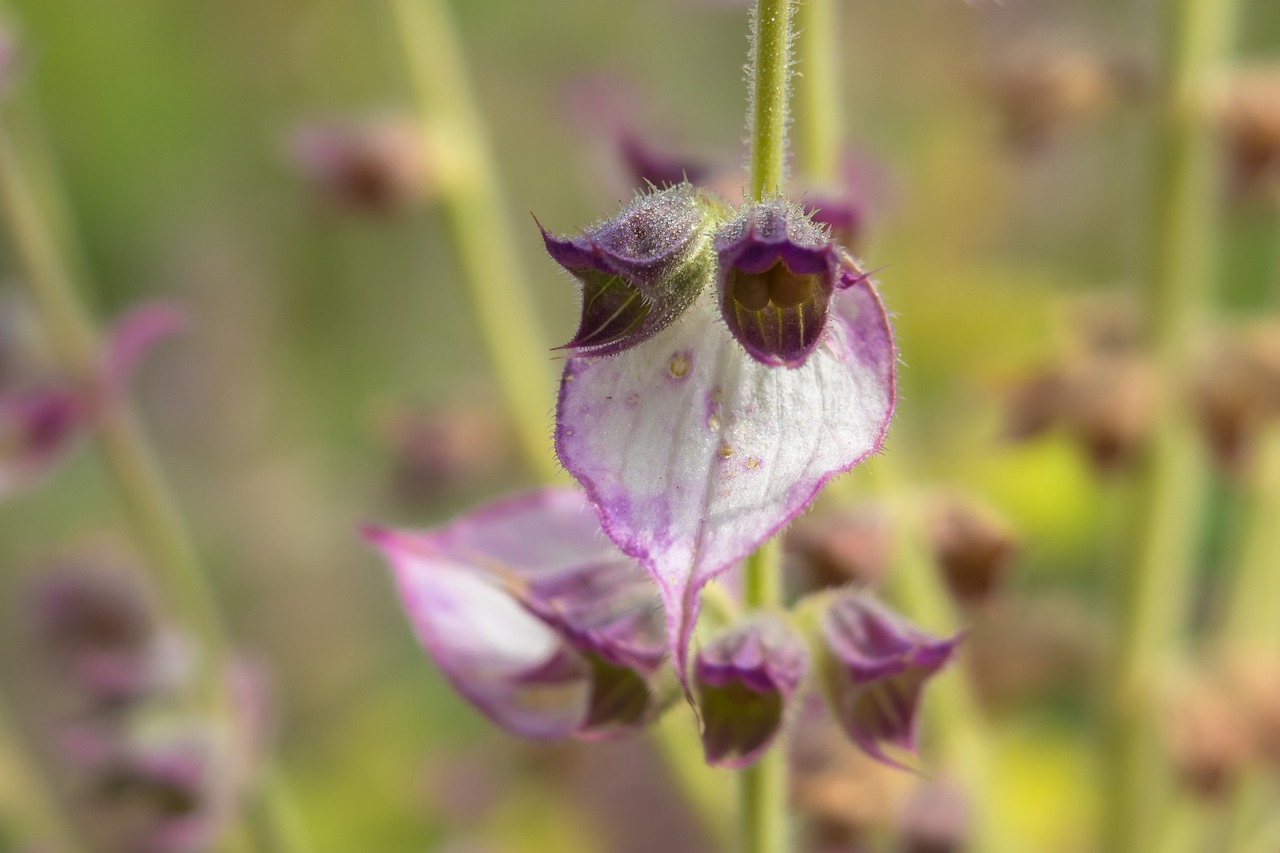
In the XNUMXth century in China, three boxes of the best tea leaves were exchanged for a box of sage leaves because the Chinese found it more precious for its virtues than tea. Sage baths tone the whole body, activate the endocrine glands (especially the ovaries) and are indicated for hypotension. Officinal and clary sage are estrogen plants recognized today even in the pharmaceutical world.
A bit of botany
There are over 800 species of sage in the world. More than half come from South America, the others from Africa and Asia. In Europe 150 species are marketed, about fifty varieties are horticultural and complete this collection. Among them the officinal sage used more as a culinary and medicinal infusion. The "clay" has large and large hairy leaves, gray green, its stem is quadrangular, thick, rigid and straight. Its floral stem soars towards the sky it carries on each side of the rather large flowers in the shape of lips of colors which can go from white to parma.
Its mode of extraction
The extraction of clary sage gives several products used in perfumery. The aerial parts of the plant are picked in full bloom, they are then dried for 12 hours to allow the water contained in the plant to evaporate.
In perfumery
It has a tenacious, ethereal, herbaceous, musk, amber note, and carries within it a warm, green smell, somewhere between animal and vegetable. It also has a “tea” aspect that goes well with citrus. It also has a sweet, chocolate side that brings a gourmet and oriental note. The absolute develops a more tobacco-heavy side because obtaining it retains heavier molecules. The absolute is used in chypre, fern and oriental perfumes. While the essential oil obtained by hydrodistillation is fresher, more volatile.
Find these aromatic plants in our natural, ethical and healthy perfumes.
Based on research by Tachka Sofer
Bibliography:
This research was made possible through the study of the following books:
The book of good herbs P. Lieutaghi, ed. South Acts
Small Mediterranean ethnobotany P. Lieutaghi, ed. South Acts
Lavender and aromatic plants D. Musset, ed. Alps of Light
Aromatherapy J. Valnet, ed. Maloine SA version The pocket book
Natural and cultural history of perfume plants, FR. Aubaille-Sallenave, ed. Ibis
Perfumes E. De Feydeau, ed. Laffont
Essential oils for your health G. Roulier, ed. dangles
The Mythology of PlantsA.de Gubernatis, ed. National Society of horticulture in France
The perfumed herbarium F. Ghozland and X. Fernandez, ed. carrot feather
When perfume brought remedy A. Le Guérer, ed. Timepiece
Aromatherapy exactly P. Franchomme and D. Penoëll, ed. Roger Jollois
Aromatic plants and essential oils in Grasse G. Gilly, ed. The Harmattan
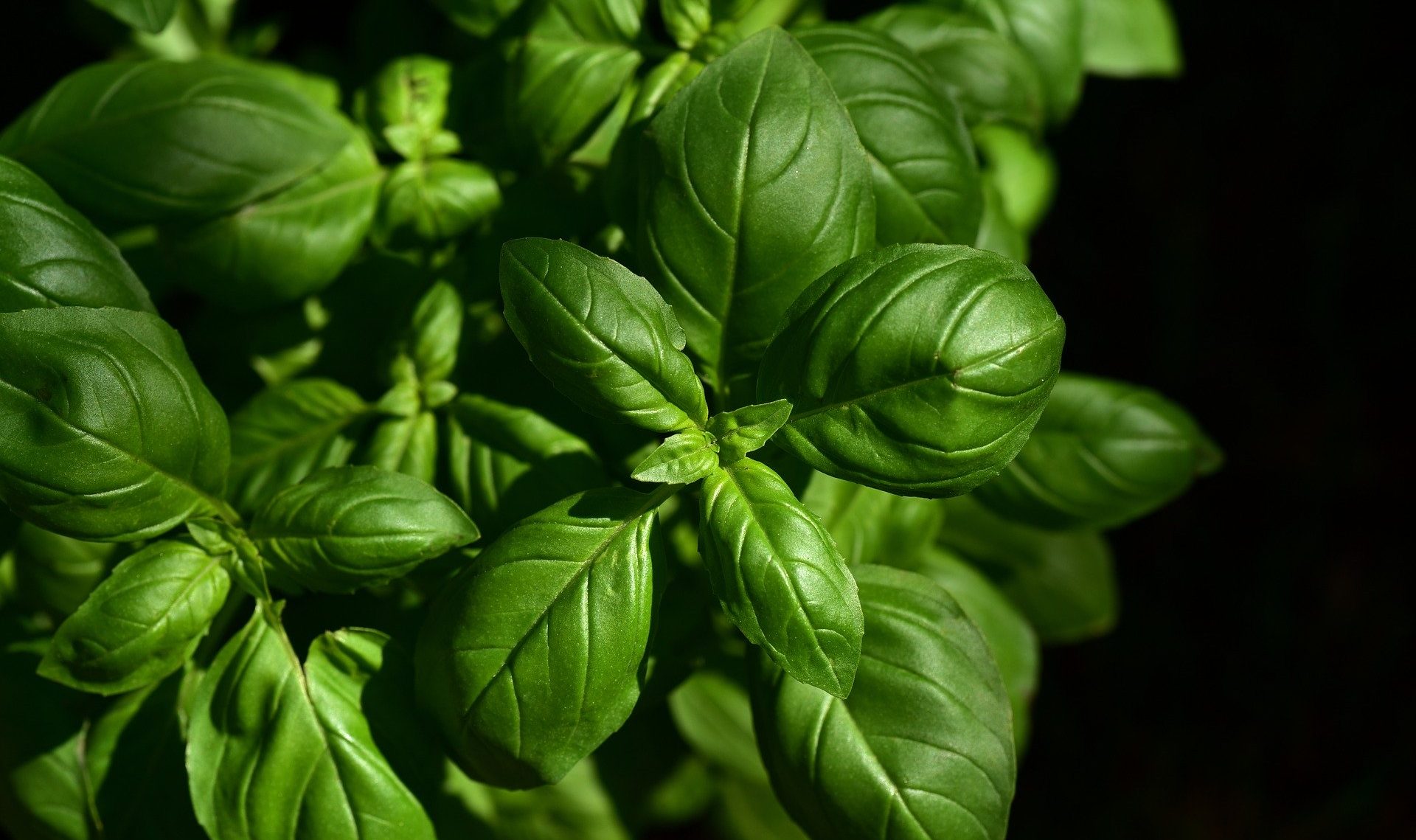
Originally
3000 years ago, the Egyptians during religious ceremonies, in the temples, used aromatic plants in fumigation in order to establish a link between man and the world of the gods. They had a great knowledge of them and used them in many ways, medicinal, in the manufacture of cosmetics, perfumes, oils, ointments. The aromatic plant differs from other plants by its odoriferous and fragrant principles. These scents can come in base, aniseed, burnt, camphor, minty, ethereal, floral, pungent, musky and even putrid aromas.
Fresh, the plant contains about 80% water, it can be used medicinally, in cooking or in cosmetics, beneficial even in the garden. Dried, it loses part of its essence. The conservation of the aromatics is done away from humidity, heat and light. Some aromatics contain essential oils used in perfumery: basil, lavender, marjoram, mint, lemon balm, rosemary, sage, verbena. They often enter into herbaceous, fern or spicy compositions. They can provide tonic, fruitiness depending on the odorous molecules they contain. The Middle Ages was the reign of the herb. All the gardens of convents and castles had their aromatic plots. The beginning of the XNUMXth century marked a decline in the use of aromatic and medicinal plants.
Our world is becoming a crossroads of smells that infiltrate our daily lives unwittingly so that our olfactory memory brings them back to us at the first emotion.
Lavender, Lavandula augustifolia Miller Lamceae
Its different blues, its scents, are intimately linked to Provence. This aromatic is nowadays inseparable from a smell of freshness, its fragrance is both fine and powerful, invigorating and soothing.
Originally
The word lavender comes from the Latin lavare, which means to wash, which will also give lavender. Its smell represents a floral note, of cleanliness.
Of the history
The Romans already washed with sprigs of lavender, it perfumed their baths, their linens. In the Middle Ages, it is found in all monastery gardens as a medicine and for cosmetic preparations, toilet waters, ointments, skin care.
In the XNUMXth century, aromatic waters were very fashionable. All royal gardens have a few squares of Lavender. Marguerite de Flandres, Duchess of Burgundy in her residences in Rouvres, near Dijon and Germolles, near Chalon sur Saône, had Lavender cultivated to obtain Lavender floral water. Lavender perfumes the vinegar used for the dry toilet, that is to say that the different parts of his body were rubbed with this perfumed vinegar in order to remove all traces of impurity. The border between medicinal and aromatic is thin.
At the end of the 1901th century and the beginning of the XNUMXth century, English Lavender prevailed over French. It was during the Universal Exhibition of XNUMX that Parisians began to reclaim French Lavender.
In the XNUMXth century, the first cultures of Lavender in Provence appeared. They will change the landscape of Provence. We had to wait for mechanization to be able to reach these hard-to-reach lavender fields.
In Provence, some fifty years ago, it was with the family that we picked Lavender, the men distilled on the spot with stills mounted on trailers, the women cut, the children tied the bouquets, the infants slept on small mattresses made of lavender flowers. Currently the culture of officinal lavender, the true, the fine, the Blue is supplanted by the culture of Lavandin. This one has a ratio twice as beneficial. But it does not enter into the composition of perfumery, it is only used for industrial uses such as soap making etc.
A bit of botany
Three species perfume the Mediterranean hills, the officinal better known as "the fine, the true", the aspic and the stoechas.
Officinal lavender: has a smaller flower, rectangular in shape, its stem is shorter, thinner. Its fragrance is delicate, flowery, it smells “clean”. It enters into cosmetic products, it is intended for perfumery.
The asp: prefers low-lying hills, is recognizable by its longer, more pointed flower. Its leaves are spatula-shaped, its smell is more camphoric.
The stoechas: has a square flower with butterfly wings. It grows in warmer and siliceous regions, bordering the Mediterranean. It has no cosmetic use and hardly any medicinal use lavandin: hybrid resulting from the crossing of the officinal and the aspic, created for the needs of the mechanization of its intensive cultivation. Its spike-shaped flower, its longer stem and its more camphorated fragrance.
Properties
True lavender, in infusion, is effective against migraines, those of digestive origin. It has stomachic and antispasmodic properties, it is also indicated in vertigo, cough, bronchial affections. It is one of the few essential oils that can be given to children. Lavender essence is used primarily for its disinfectant and healing effects. On the scalp a few drops are enough to keep lice away. Diluted in a glass of hot water, two or three drops of essential oil are effective, when inhaled, against rhinitis, bronchitis. Lavender baths are indicated for children who have skin problems, dermatoses.
Its methods of extraction
Its harvest is done in July, at noon at the hottest time of the day. Lavender “boots” are cut and left on site for 48 hours to dry before processing. We then obtain a fresher essential oil without any hint of heating. For about twenty years, at the request of certain perfumers, experiments have been developed with so-called "crushed green" distillation, the chopped plant is treated without prior drying on the harvest site, in mobile vats then connected directly to a boiler. We get a very fresh, very green our. Lavandin and Lavender are the most produced perfume plants with essential oils in France.
In perfumery
It is part of the recipe for the famous "Aqua mirabilis" by Feminis in the XNUMXth century, which would later become eau de Cologne. Lavender is one of the main constituents of what is called the “fern accord”, an olfactory family made up of lavender, coumarin, oak moss and wood. It is a heart note, but it can also be found as a top note in fresh compositions. It is a woody smell (by its stems) and very floral when it is picked at altitude. The smell of lavender is very attractive to men, it is present in most male colognes. Lavender honey is a very fragrant and renowned honey, melting in the mouth it is all Provence that one tastes.
The Basilic, Ocimum sanctum, L. Ocimum basilicum, L. Lamiaceae
Its smell is most refreshing., basils are still appreciated and valued by Mediterranean culture. It's the smell of seduction, which whets the appetite...
Originally
The ocimum sanctum, the tulsi is the sacred nit for the Hindus, in all the courtyards of the houses an altar is dedicated to it. Its roots symbolize the pilgrims, its branch the divinity, its crown the Scriptures. Basil is a Greek word meaning "royal".
Myths and legends
A legend says: The conversion of the last Roman emperor, Constantine, led to the institution of Christianity as the state religion in the Roman Empire. The latter had a very religious mother, named Saint Helena. She looked in vain for the cross of Christ. She left for Jerusalem, to search everywhere around Golgotha when she had a dream which advised her to return to the place of torture and to let herself be guided by a divine perfume. Back on the scene, the air smelled of a modest plant, basil. And it was under this plant that she discovered the cross. To attract their lovers, Roman courtesans cultivated it on the edge of their windows. It is said that the Greek emperors were baptized with floral water of basil.
A bit of botany
Originally from India, it will be brought back by the Arabs who make it undergo transformations. Currently, there are 150 species and even more varieties, horticulturists come up with varieties that smell like cinnamon, lemon, camphor, licorice.
Its mode of extraction
It is the aerial parts of the plant that are of interest to perfumery. Like most aromatics, basil is steam distilled. It is a clear, light yellow liquid characterized by a herbaceous, spicy and aniseed odor.
In perfumery
Two varieties are used in perfumery, the sweet basil with linalool grown in Yugoslavia, Morocco, Italy and Spain used in high-class perfumery and that rich in thymol produced mainly in Madagascar, Reunion, South Africa. It is used in inexpensive perfumery and soaps. Its smell is very difficult to reproduce synthetically. It is a green freshness. It enters into the composition of fresh waters, it reinforces the zesty side. It can also be used in a fruity chypre.
Marjoram : Oreganum vmarjorana, Lamiaceae L.
Originally
Very close to oregano in its composition, it is the cultivated version. While oregano can be found growing wild, marjoram is only found in cultivation here in Europe. It is the symbol of joy, its smell calms the spirits and heals the body.
Of the history
The Egyptians already knew its use, against headaches and nervous disorders. The Romans used it as an ointment for dental care. You can always find toothpaste with clay and marjoram. Marjoram baths are considered tonic, antispasmodic and beneficial for circulatory problems.
A bit of botany
Its stem is straight and frail, its leaves are opposite and alternate in the shape of shells, hence its popular name "marjoram with shells". From there leave its flowers in the form of lips of white color, grouped and small.
Its mode of extraction
It takes 750 kg of stems and flowering tops, fresh to obtain one kg. It is a pale to dark yellow liquid.
In perfumery
It has tonic, bitter, aromatic, hay and spicy notes. She enters as a moderator in the herbaceous, fern, spicy compositions.
Lemon balm : Melissa officinalis L. Lamiaceae
Originally
Melissa is the Greek name of the nymph who found a way to collect honey. It has become by extension the name of the bee; she is the beloved of the bees. To increase their production and to attract new bees, beekeepers rub the hives with lemon balm flowers. It is native to the eastern Mediterranean basin. It is recognized by its lemony scent which often gives it its pseudonym of lemongrass.
Of the history
In 1379, a few years after the creation of the Elixir of the Queen of Hungary, the nuns of the Abbey of Saint Just, elaborated for King Charles V the famous Water of the Carmelites made by the Carmelites, composed mainly of Melissa. This water is still made today in the convents of the Carmelites as in that of Venice. In the Middle Ages, it was cultivated not only in France, in northern Italy, but also in England, Germany and even in Scandinavia. Bath water was perfumed with it to strengthen the body. It is still cultivated in Switzerland, in the Doubs, in Haute-Saône to sweeten absinthe.
A bit of botany
It is a perennial plant, it grows in the shade, in cool places inhabited at the foot of walls, and sometimes in the vineyards. Its oval-shaped, embossed, widely serrated leaves are light green. When crumpled they give off a strong smell of lemon. Its flowers are small, white, sometimes pinkish, in the shape of lips. We harvest it from St. Jean in the middle of August in the morning, when the last drops of dew have evaporated. It is dried in bunches in the shade, its leaves should neither turn black nor yellow. It retains its good smell as soon as its leaves are crumpled.
Uses
It is a beneficial plant in states of nervous disorder. It is good for fighting against palpitations, dizziness, insomnia. It can also calm the nausea of pregnant women. It is used in infusion, never in decoction because it loses all its flavor. To be taken after the meal, it can be mixed with mint to facilitate digestion. Finely chopped fresh lemon balm leaves can flavor a salad. In maceration for 24 hours, 60 grams of leaves added to a liter of wine is a pick-me-up specially intended for tired men to be used as a medicine. This is a recipe taken up by Paracelsus (doctor and philosopher of the XNUMXth century).
Its mode of extraction
The leaves are steam distilled, fresh leaves are distilled. Lemon balm has a strong smell but is very volatile.
In perfumery
Given its performance, it is used by some so-called niche perfumers. Its fresh and lemony scent makes it a particular herbaceous, a smell of green, moist earth. It is given as an example because it is a popular plant by its uses and its smell but this one is totally volatile that it is elusive.
Peppermint, Mints: Mentha piperita Huds. Peppermint
Originally
Derived from the Latin mens-mentis meaning mind, its use in ancient times was to stimulate the mind.
Mythology
As for the spring, Hades king of the underworld married to Persephone, came out of the underworld, he put his foot on a tuft of mint represented by a Mintha nymph. He is immediately seduced by this smell and lies down on it. Demeter, goddess of knowledge, of agriculture, mother of Persephone, does not accept this attitude at all. Tramples the mint, makes it sterile, thus condemning it to reproduce by underground stolons...
Of the history
Cultivated on a large scale, sold in all pharmacies, mint is one of the most recognized plants, it owes it to its perfume. The most popular are certainly peppermint and spearmint. They are still grown at the foot of the Lure mountain. In America at Yale University studies have been made on smells, Lavender wins the prize for the best smell while mint is considered the most dynamic of aromatics, thus making the minds of students more lively, more awake. Japan is the world's largest producer of peppermint. In the world of aromas, the scent of mint comes in third place. At the top we find vanilla, followed by citrus fruits.
Uses
Mints are digestive, tonic, stimulating and antispasmodic. In infusion, they have a power on the nervous system, they are therefore indicated in case of insomnia, palpitations, neuralgia, cramps, tremors. They fight bad breath, they are used in cases of digestive poisoning. At higher doses, they are indicated in case of general weakness. Its essential oil is best for treating indigestion, two drops on a teaspoon of honey. Its use is reserved for adults, it is too exciting and irritating for children, never make an infant smell mint essence, there is a risk of asphyxiation. In external use, in case of fainting rub the gums with 2-3 drops of mint essence. Remember the mint alcohol that our parents gave us after a festive meal. The handkerchief soaked in two drops of essential oil, which we breathe against car sickness.
A bit of botany
Only eight true species are known in Europe, 30 to 40 species in the world for 1200 hybrids. Being part of the Labiatae family, it has the same characteristics, square stem, opposite leaves, its flower in the shape of lips, composed of two very small, welded petals.
The best known are spearmint (mentha spicata), a hybrid of true mint (mentha suaveolens) and spearmint (mentha longifolia). It is also called nanah mint, originally from Lebanon, it came to us in the XNUMXth century by the Crusaders.
Peppermint (mentha piperata) is a cross between water mint (mentha aquatica) and spearmint.
Its mode of extraction
All mints provide an essential oil obtained by steam distillation of plants picked just before flowering. The facilities are sometimes rudimentary, copper stills, sometimes sophisticated, stainless steel tanks, depending on the place of production. It is in England at Mitcham that the finest peppermint is extracted. Today the United States is the largest producer of peppermint.
In perfumery
Field mint, pennyroyal, spearmint and peppermint are those used in perfumery. Perfumers have long favored peppermint for its balsamic freshness. She often features in male waters because she is fresh and vigorous. It can accompany spicy notes and become a fresh spicy kind. Nowadays a new variety arrives on the market, villosa mint, grown in southern Spain and Morocco. Its essential oil is reserved only for perfumery. It provides the pennyroyal oil of the English. Lemon mint can sometimes take the place of Bergamot, Lemon and Orange in certain toilet waters. All mints are considered top notes.
Rosemary, Rosmarinus officinalis L. Lamiaceae
This plant has a great wealth of uses due to its aromatic, medicinal and symbolic properties.
His origin
It grows spontaneously all around the Mediterranean, and as far as Central Europe. Its Latin name means “dew of the seas”. Its evergreen foliage guaranteed immortality. It is said that the Virgin Mary and her child, pursued by Roman soldiers, hid in a rosemary bush.
Of the history
Among the Romans it was used as a token of remembrance and later to mean "I'm thinking of you". The beauties of Antiquity and until late in the Middle Ages, perfumed themselves with oil in which rosemary flowers had macerated. In the 1370th century, Arnaud de Villeneuve, a doctor in Montpellier, knew how to distil the essence of pistachio terebinth and that of rosemary. He was the first at the beginning of the XNUMXth century to isolate the essential oil that floats on the surface of distilled water. All these properties were attributed to the smell of the plant heated in the sun. It was the first plant to be distilled in the spirit of wine, in XNUMX for the manufacture of a treatment intended for Isabella of Hungary to give her a water of youth which allowed her to regain her youth and thus to marry the king of Poland. This elixir was called "water of the Queen of Hungary". It will keep its prestige for several centuries.
Uses
This water from the Queen of Hungary was used for a long time as an all-purpose remedy, applied to the neck and temples: it increases memory and calms the spirits. On the eyelids: it fortified the view, on the stomach relieved abdominal pain. To inhale clears the airways, calms bronchitis, sinusitis. It could also be drunk as an aperitif, which allowed an external and internal purification by the aromatic virtue. It is antiseptic, healing, parasiticidal. Powerful stimulant, it is best known for its hepatic action, it promotes bile secretion. It is one of the best antispasmodic and stimulating plants. Depurative, it can help purify the skin. Its essential oil mixed with a vegetable oil prevents cramps, relaxes, heals sprains. Rosemary flowers and leaves macerated overnight strengthen eyesight and memory. Rosemary oil should always be used internally, in moderation. The general fortifying rosemary baths are beneficial for liverworts and those suffering from visual impairment.
A bit of botany
A small evergreen shrub, it is one of the aromatic and medicinal plants of the Mediterranean scrub. Its leaves are very narrow, leathery, long and thin, green above and white below. Its flowering made of small blue flowers, spreads from February to November.
In perfumery
Distilled rosemary gives a fresh and pleasant fragrance with resinous notes. Rosemary is a bush that quickly makes wood. It is used to flavor cosmetic products such as deodorants and bath salts. The essence of the leaves is finer than that of the flowers. Its flowers give a much appreciated honey.
clary sage, salvia sclarea, L. Lamiaceae
He who has sage in his garden does not need doctors.
That is to say how much this plant is charged with hope, it cures many ailments, sacred herb, offered to the gods, burned on the altars.
Originally
Sage, salvia in Latin, comes from salvare which means to save
Of the history
During Antiquity, the Egyptians used to drink it as an infusion to increase their fertility. The Greeks, Romans and Arabs used it as a tonic and as a compress against snakebites. Some Native American tribes mixed sage with animal fat to treat skin problems. In the Middle Ages, common sage and clary sage were found in all monasteries' gardens to treat various ailments. Hildegarde de Bingen calls clary the queen of aromatic plants, the very good one. In the XNUMXth century in China, three boxes of the best tea leaves were exchanged for a box of sage leaves because the Chinese found it more precious for its virtues than tea. Sage baths tone the whole body, activate the endocrine glands (especially the ovaries) and are indicated for hypotension. Officinal and clary sage are estrogen plants recognized today even in the pharmaceutical world.
A bit of botany
There are over 800 species of sage in the world. More than half come from South America, the others from Africa and Asia. In Europe 150 species are marketed, about fifty varieties are horticultural and complete this collection. Among them the officinal sage used more as a culinary and medicinal infusion. The "clay" has large and large hairy leaves, gray green, its stem is quadrangular, thick, rigid and straight. Its floral stem soars towards the sky it carries on each side of the rather large flowers in the shape of lips of colors which can go from white to parma.
Its mode of extraction
The extraction of clary sage gives several products used in perfumery. The aerial parts of the plant are picked in full bloom, they are then dried for 12 hours to allow the water contained in the plant to evaporate.
In perfumery
It has a tenacious, ethereal, herbaceous, musk, amber note, and carries within it a warm, green smell, somewhere between animal and vegetable. It also has a “tea” aspect that goes well with citrus. It also has a sweet, chocolate side that brings a gourmet and oriental note. The absolute develops a more tobacco-heavy side because obtaining it retains heavier molecules. The absolute is used in chypre, fern and oriental perfumes. While the essential oil obtained by hydrodistillation is fresher, more volatile.
Find these aromatic plants in our natural, ethical and healthy perfumes.
Based on research by Tachka Sofer
Bibliography:
This research was made possible through the study of the following books:
The book of good herbs P. Lieutaghi, ed. South Acts
Small Mediterranean ethnobotany P. Lieutaghi, ed. South Acts
Lavender and aromatic plants D. Musset, ed. Alps of Light
Aromatherapy J. Valnet, ed. Maloine SA version The pocket book
Natural and cultural history of perfume plants, FR. Aubaille-Sallenave, ed. Ibis
Perfumes E. De Feydeau, ed. Laffont
Essential oils for your health G. Roulier, ed. dangles
The Mythology of PlantsA.de Gubernatis, ed. National Society of horticulture in France
The perfumed herbarium F. Ghozland and X. Fernandez, ed. carrot feather
When perfume brought remedy A. Le Guérer, ed. Timepiece
Aromatherapy exactly P. Franchomme and D. Penoëll, ed. Roger Jollois
Aromatic plants and essential oils in Grasse G. Gilly, ed. The Harmattan

End of the Virevolte adventure
Do not hesitate to consult the list of our resellers if you wish to buy one of our perfumes.
Julie Desoomer
